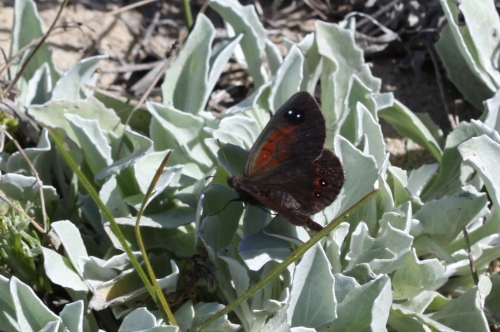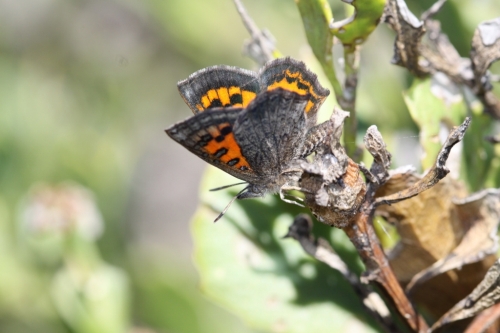Last Sunday Andrew & I took our families for a picnic. We did however have an ulterior motive–chasing butterflies. We stopped at Kogelberg to hunt for the coastal subspecies of the Giant Copper Aloeides pallida littoralis. After a slow start in sunny but windy conditions we were quite successful. These butterflies are among the largest of the South African Copper group and like many copper species are quite variable in colour–ranging from dull brown to bright magenta.

Freshly hatched female Giant Copper Aloeides pallida littoralis – red form.

Giant Copper Aloeides pallida littoralis – brown form.
There were a few other common butterflies present:

Cupreous Blue Eichchrysops messapus
We then visited a spot further along the coast just before Kleinmond. Only present were common butterflies:

Aranda Copper Aloeides aranda – brown form

Dickson’s Geranium Bronze Cacyreus dicksoni


















































































